BEST DRONES FOR FILMMAKING – Cinematic Drone Guide
Filming with drones is made very accessible to filmmakers these days. It’s only a few years ago when drones were introduced to filmmakers. Before, all aerial shots were taken from a helicopter. Using drones for filmmaking will not only cut your production costs, but it also offers a lot more creative possibilities. Filming with drones gives you for example the possibility to make indoor aerial shots. With a helicopter, you will also be limited when shooting aerial footage in for example narrow spaces.
There are so many advantages these days to film with drones. A wide range of models is offered on the market, there is something for everyone. But what are the best drones for filmmaking? Every filmmaker has his wishes for what he needs and what features a professional drone must have. As a travel filmmaker, I need a quality drone that is compact, light, reliable, and easy to handle. Besides the capabilities to record excellent high resolution video footage I need it to have enough megapixels to shoot professional photos. Before I review several filmmaking drones I shall provide you with the features and specifications you need to look for. This information will help you decide which model can be your best drone for filmmaking. I made a ranking for both consumer and professional drones because these models differ too much from each other. Are you ready to discover some of the best drones on the market?
Features and specifications to look for | Commercial Drones
In this section, I will write down which features and specifications filmmaking drones must have. This is mainly intended for consumer drones as manufacturers offer these as complete drones including the camera. Professional drones often can be configured, especially the camera. With professional drones, it’s even the case that you only buy the drone (the body). These drones are designed to get a large cinema camera attached which will result in much higher image quality than the consumer drones. Most of the time you need a drone pilot and a separate camera operator when flying these professional drones.
Now it’s time to discuss the following features and specifications:
- Video resolution and frame rates
- Flight time
- Speed
- Intelligent flight modes
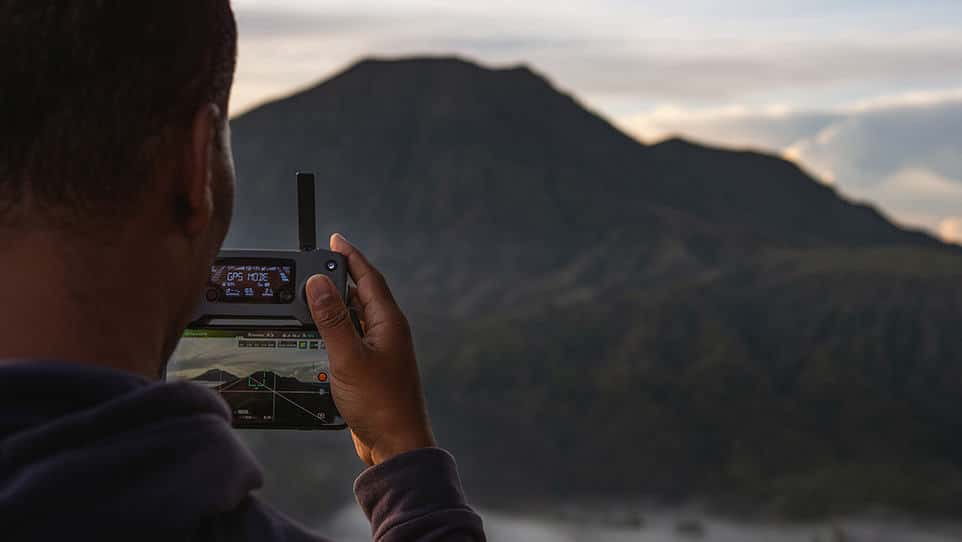
Video resolution and frame rates
The higher the resolution the sharper the image will look because the more details it can capture. With 4K camera resolution, you will have way more flexibility to crop your image in post-production without losing too much detail of the image. This might be handy when using drones for filmmaking as most consumer drones only have wide lenses mounted. With these wide lenses, you easily capture a subject in your frame you might want to crop out. Read my other blog about how to crop a video in Adobe Premiere Pro!
Slow-motion footage looks dreamy and will create a different kind of emotion in the image. To be able to film slow motion you need a camera able to record high frame rates per second (minimal 50/60 fps). You want to have this option available in filmmaking because at some point you need to use it creatively. The higher the frame rate the camera can record the more slow-motion you can produce. Standard slow-motion is 60 fps which is 2.5 times slower than normal speed and is often available in 4K. You can record higher frame rates than that with consumer drones but only in a lower resolution (HD)
My experience with aerial footage in slow motion is that I don’t use it very often. Especially when the distance between the drone and the subject is quite far, the movement of the drone already looks slow. Using slow-motion can be effective when you want your subject to slow down. I have for example some shots of flying birds and a running horse which are looking amazing in slow motion.
Flight time
The next important feature to look for in filmmaking drones is Flight time. The longer, the better and the battery life is mainly responsible for this. Why is this important when filming with drones? Well, some shots need more takes and a great battery life and flight time will prevent you from changing the batteries during these takes. Another situation may be that you have to hover in the air for a long time to be ready for the shot. Especially when filming a scene captured by various camera operators at the same time this can be helpful.
Speed
Filmmaking drones are awesome to track vehicles. Cars, motorcycles or boats are often captured in aerial footage. When tracking these vehicles you need enough speed to keep up with them. A minimum speed of 50 kph is necessary to achieve this. The shorter the distance you will track a vehicle the more speed you need.
Intelligent flight modes
Most consumer drones have Intelligent flight modes available to support the drone pilot with specific maneuvers. When filming with drones these modes will make it easier to control the drone. This improves safety and costs because the risk of crashing your drones is reduced
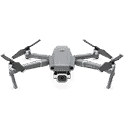
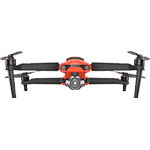
Top 3 – Best consumer drones for filmmaking
1. DJI Mavic 2 Pro – $1,599
2. Autel Robotics EVO II Pro – $1,795.00
3. DJI Phantom 4 Pro V2 – $1,599

(Prices from official websites – July 2020)
Best CONSUMER drones for filmmaking – the details
#1. DJI Mavic 2 Pro – $1,599
When DJI introduced the DJI Mavic 2 Pro in mid-2018, a lot of filmmakers made the switch to this successor of the Mavic Pro. But why is this the best drone for filmmaking you can get on a consumer level? Apart from the superb handling, where DJI stands out as the market leader, the Hasselblad camera is the main reason for this.

SENSOR SIZE | RECORDING MODES | DYNAMIC RANGE
Thanks to the 1 inch CMOS 20 MP you can capture high quality 4K resolution footage up to 60 fps. The maximum video bitrate of 100Mbps and the 10-bit Dlog-M color profile is delivering a clean image with beautiful colors and a high dynamic range. Thanks to this you have great flexibility in post-production with creating the film look you want. The adjustable aperture is a great improvement compared to its predecessor the Mavic Pro. Especially with filmmaking you want to keep your shutter speed double the frame rate you’re recording. With the adjustable aperture, you are more able to control your exposure to get that cinematic look.

You might add some ND filters to keep your shutter speed on cinematic levels while maintaining a lower aperture. With the Mavic 2 Pro, you will get the clearest and sharpest image using an aperture up to f4. Higher values will make the footage look softer.

MY PERSONAL EXPERIENCE WITH THE MAVIC 2 PRO
I’m using the Mavic 2 Pro for a year now and I am still impressed by the image quality and overall handling of this drone. For me, the Mavic 2 Pro is the best quality drone for filmmaking. The dynamic range is outstanding and because of the 1-inch sensor, the low light capabilities are very impressive. As a travel filmmaker, the weight and dimension of a drone are also very important. Folded, the Mavic 2 Pro measures only 214×91×84 mm (length×width×height) and weighs 907g, it fits perfectly in my compact camera backpack. Hiking is a lot more fun with this drone, as I can tell as a previous owner of the much bigger and heavier DJI Phantom 4 Pro.
Another big plus of this drone is how silence the propellors are. You can make your shots in a much more discrete way without getting all the attention of people around you. The flight time depends on how you use it together with the outside temperature. On average the battery life is very good with a maximum flight time of 25 min. In sport mode, the Mavic 2 Pro can reach a top speed of 72 kph/45 mph.

YOU ARE IN CONTROL WITH THE MAVIC 2 PRO
Out of camera the footage always looks very smooth thanks to the 3-axis stabilization the gimbal provides, even in windy circumstances. You never feel out of control with the Mavic 2 Pro, it always reacts precisely to your input.
DJI has always been very progressive concerning the intelligent flight modes and I can say from experience these modes certainly support you to get some complex camera movements. Together with the obstacle avoidance, you feel comfortable to focus more on your screen than the aircraft itself during a shot.
Features making the Mavic 2 Pro the best drone for filmmaking:
+ 10-bit Dlog-M color profile
+ 4K up to 60 fps
+ Great low light performance thanks to the 1-inch sensor
+ Adjustable aperture
+ Dimensions and weight
+ Handling
+ Intelligent flight modes
+ Obstacle avoidance
#2. Autel Robotics EVO II Pro – $1,795.00
Autel Robotics isn’t that popular (yet) as DJI but at the moment they are the only manufacturer which offers a drone comparable with the Mavic 2 Pro. With the Autel Robotics EVO II Series, they offer three models, The EVO II, EVO II Dual and the EVO II Pro.
As from these 3 models, the Autel Robotics EVO II Pro is the best drone for filming, this model ranks as #2 in the list of best drones for filmmaking. Just like the Mavic 2 Pro, the Autel Robotics EVO II Pro has a 1 inch CMOS 20MP sensor. It also has an adjustable aperture (f2.8-f11). Thanks to this you will get a superior image quality, as well in low- and limited-lighting conditions.

VIDEO RESOLUTION | RECORDING MODES | FLIGHT TIME
Comparing the video resolution, the Autel Robotics EVO II Pro can record up to 6K! The 10-bit, A-Log color mode allows you great flexibility in post-production as it retains rich detail in shadows and highlights. You even have 4K HDR recording to enhance contrast and color. It records with a maximum bitrate of 120 Mbps which is 20 more than the Mavic 2 Pro. The video resolutions of 6K (max 30 fps) is pretty impressive, and even more when you scale it down to 4K it’s amazing how much detail it’s able to capture. Thanks to this high resolution you also can zoom in/crop the image a lot when you want the subject to appear closer.
Autel Robotics claims a maximum flight time of 40 minutes for their EVO II. In practice, this won’t be the average flight time but it seems the Autel Robotics EVO II outperforms the Mavic 2 Pro here. With a maximum flight speed of 72 kph/45 mph and 360° Obstacle Avoidance, it offers the same performance in this like the Mavic 2 Pro.

AUTEL ROBOTICS EVO II PRO VS. MAVIC 2 PRO
Despite the higher 6K resolution and longer flight time compared to the Mavic 2 Pro, the Autel Robotics EVO II Pro underperforms in the following areas; Price and handling.
Currently with a price of $1,795.00 it costs almost $200 more than the Mavic 2 Pro. For this amount, it comes in a striking orange color, which is not so much better in the taste, but definitely stands out more in the air.
The handling doesn’t seem that precise as you will experience with the Mavic 2 Pro. It drifts more away when hovering in the air and it doesn’t react that well on the input you give on the remote controller. I’m sure Autel Robotics will improve this with feature software updates.
With a Diagonal Wheelbase of 397mm, it is slightly bigger than the Mavic 2 Pro (354 mm) and therefore also heavier with a weight of 1191 grams.
Features making the Autel Robotics EVO II Pro the second-best drone for filmmaking:
+ Video resolution of 6K
+ 10-bit, A-Log Color profile
+ Maximum bitrate of 120 Mbps
+ Adjustable aperture
+ Great low light performance thanks to the 1-inch sensor
+ Battery life and flight time
+ Obstacle avoidance– Price
– Handling
– Less Intelligent flight modes (only Dynamic Tracking mode)
3. DJI Phantom 4 Pro V2.0 – $1,599
Before DJI released the Mavic 2 Pro, the Phantom 4 Pro was their best drone for filmmaking. Now, with the V2.0 they optimized this model and it is still good enough to take the third spot on this list of the best drones for filmmaking!
Before I switched to the Mavic 2 Pro, I’ve used several Phantom 4 Pro models and the differences are very clear to me. To keep it simple, the DJI Phantom 4 Pro V2.0 offers almost the same features as the Mavic 2 Pro, but it’s a lot heavier and bigger to carry with you. It’s a robust and stable drone. And although the camera’s specifications are almost identical, the camera sensor is designed by a different manufacturer which results in a different look. Also, the camera of the Mavic 2 Pro performs much better in low light than the DJI Phantom 4 Pro V2.0.

Have a look at the differences between the Mavic 2 Pro and the DJI Phantom 4 Pro V2.0:

WHY THE DJI PHANTOM 4 PRO IS NOT THE BEST DRONE FOR FILMMAKING ANYMORE
I always loved the DJI Phantom 4 Pro but since I switched to the Mavic 2 Pro I still can’t find a reason why I should choose the Phantom 4 Pro 2.0 over the Mavic 2 Pro. When you love bigger drones, the Phantom series is made for you. Also, there might be different opinions or taste which camera look you like more. Luckily there is a lot of online footage available to do the comparison before you decide which one becomes your best drone for filmmaking. Because of the dimensions and weight, only 8-bit color depth and (al lot) louder appearance I rank the DJI Phantom 4 Pro V2.0 as #3 on the list of the best drones for filmmaking.
The DJI Mavic Air 2 and DJI Mavic Mini are also used by filmmakers. In particular, the DJI Mavic Air 2 is capable of capturing great-looking footage but in my opinion, the Mavic 2 Pro offers so much more with regard to image quality and all-round performance. In case your budget is lower than $1000 the Mavic Air 2 is a good alternative for a price starting at $799.
Best PROFESSIONAL drones for filmmaking
Depending on your budget and on what kind of filmmaker you are, you might need more features than the consumer drones can offer. Starting from an amount of $5,699, DJI has 2 high professional drones available. The DJI Matrice 600 Pro and the DJI Inspire 2.
Where the DJI Matrice 600 Pro is compatible with multiple Cinema, DSLR or mirrorless cameras, the DJI Inspire 2 is limited to the Zenmuse camera range. A simple question you have to ask yourself to select one of these professional drones as your best drone for filmmaking is; Do I want to be able to attach my own (cinema) camera (DJI Matrice) or do I need a complete Drone + Camera (DJI Inspire)?

DJI Inspire 2 – $3,299 – $20,579
As a successor to the DJI Inspire 1, the DJI Inspire 2 raised the bar (again) for professional filmmaking drones. It’s designed for high-end filmmaking and offers everything filmmakers need to shoot professional footage. The build quality and flight performance of this drone are more than reliable. The intelligent flight modes and obstacle avoidance perform even more precisely than they do on the consumer drones van DJI, which are already high level. Safety is no concern when flying this drone, it saves itself.
The first biggest advantage of this level drone is the possibility to operate the aircraft and camera with two separate remote controllers. This will give filmmakers maximum control in executing (complete) aerial shots. The drone pilot can keep his eye on the flight path of the DJI Inspire 2 with the support of an FPV camera in the nose facing forward. This will secure safety as the main camera can rotate 360 degrees and can be operated separately by a camera operator.

VIDEO QUALITY | RECORDING MODES | LENSES
A huge second advantage of the DJI Inspire 2 is the camera video quality and the possibility to use interchangeable lenses with different focal lengths (Learn everything about focal length comparison here). Current DJI offers 2 different camera types for Inspire 2, the Zenmuse X5S and the X7.
The image quality of both cameras is very impressive. The X5S has a Micro 4/3 sensor, Can record 5K/30 fps or 4K/60 fps in 12-bit RAW color depth with a dynamic range of 12.8 stops! The X5S supports up to eight standard M4/3 lenses (including zoom lenses) with focal lengths ranging from 9mm-45mm (equivalent to 18mm-90mm on a 35mm camera). This allows more creative flexibility and high-resolution images of incredibly high quality. You might need a third person to operate the DJI Inspire 2 as the also offer a long range focus and camera control up to 7 kilometers.

If the X5S is already enough for you, the X7 will blow your mind even more. The X7 uses a bigger Super 35 sensor and can capture 6K cinema resolution and delivers 14 stops dynamic range! DJI offers 4 prime lenses for the DL-Mount system, with focal lengths ranging from 16-50 mm. The complete range is 16mm, 24mm, 35mm and 50mm with a fixed aperture of f2.8. The low light capabilities of the X7 in combination with these fast prime lenses are insane! For the full specifications have a look at DJI.com. They are offering many more features developed for high-end filmmaking.
I’ve seen various footage of the DJI Inspire 2 on high-resolution screens and the quality and details are stunning. This might be the overall best drone for filmmaking, especially for the professional market.
DJI Matrice 600 Pro – $5,699
You may have seen a flying RED camera attached to a drone in some BTS from a Hollywood blockbuster. If so, there is a big change the producers used the DJI Matrice 600 Pro for this. The DJI Matrice 600 Pro has a maximum payload of 6 kilograms and is compatible with all of the DJI Zenmuse line of cameras and gimbals. This makes it possible to attach cinema cameras like the RED Epic or Mirrorless cameras like the Sony A7iii or Panasonic GH5.
The setup looks a bit more bulky and difficult compared to Inspire 2 because of its 6 rotors. In practice, the setup is quite easy and you are ready to fly in a few minutes. DJI has used lightweight materials, like the aluminum body and foldable carbon fiber arms. The same material is used for the six propellers. The weight of the aircraft incl. 6 batteries is around 10 kgs and a top speed of 40 mph/60 kph can be reached.

FLYING WITH THE DJI MATRICE 600 PRO
Flying this drone needs some serious skills. As a drone pilot of the DJI Matrice 600 Pro, you are responsible for as well the valuable attached camera, as the drone itself. You won’t get any support from obstacle avoidance or intelligent flight modes like you have with the DJI Inspire 2. Luckily you don’t have to operate the aircraft and camera at the same time as you can use 2 remote controllers to operate them separately with 2 persons.
Thanks to the 6 large motors and propellers the Matrice can lift the heavy payload of 6 kgs. Interesting to know is that if a motor fails the drone can control itself for a safe landing. The maximum flight time depends on your payload and movement but will vary between 10-20 minutes.
Have a look HERE for all the detailed specifications of this impressive aircraft. In case you own a RED camera and you are brave enough to get it up in the air, the DJI Matrice 600 Pro might be your best drone for filmmaking!

Compatible with different cameras (image source: www.dji.com)
What is the best drone for traveling?
I hope this article will help you decide to pick on of the best drones for filmmaking. If you still have any questions don’t hesitate to ask me in the comments section! I also published an article about which drone is the best for traveling, you can read it all HERE
Disclosure: Some of the links in this post are “affiliate links.” This means if you click on the link and purchase the item, we will receive an affiliate commission without extra costs for you.

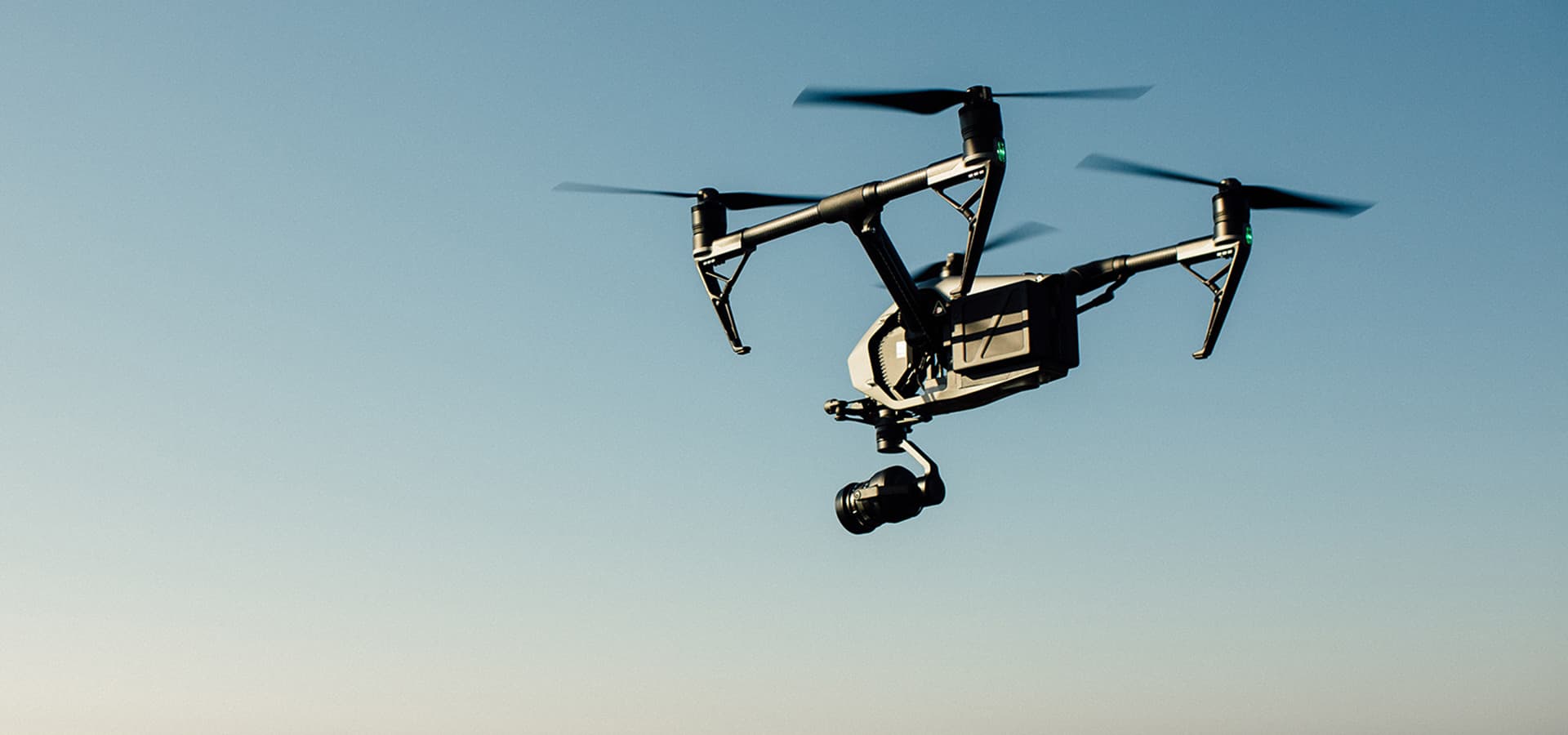
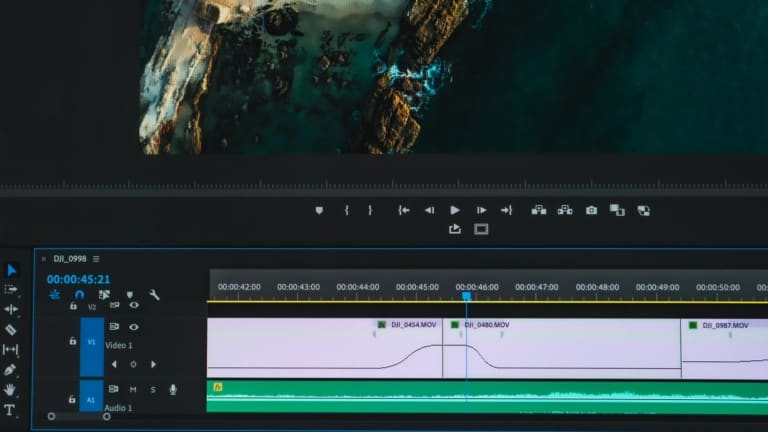
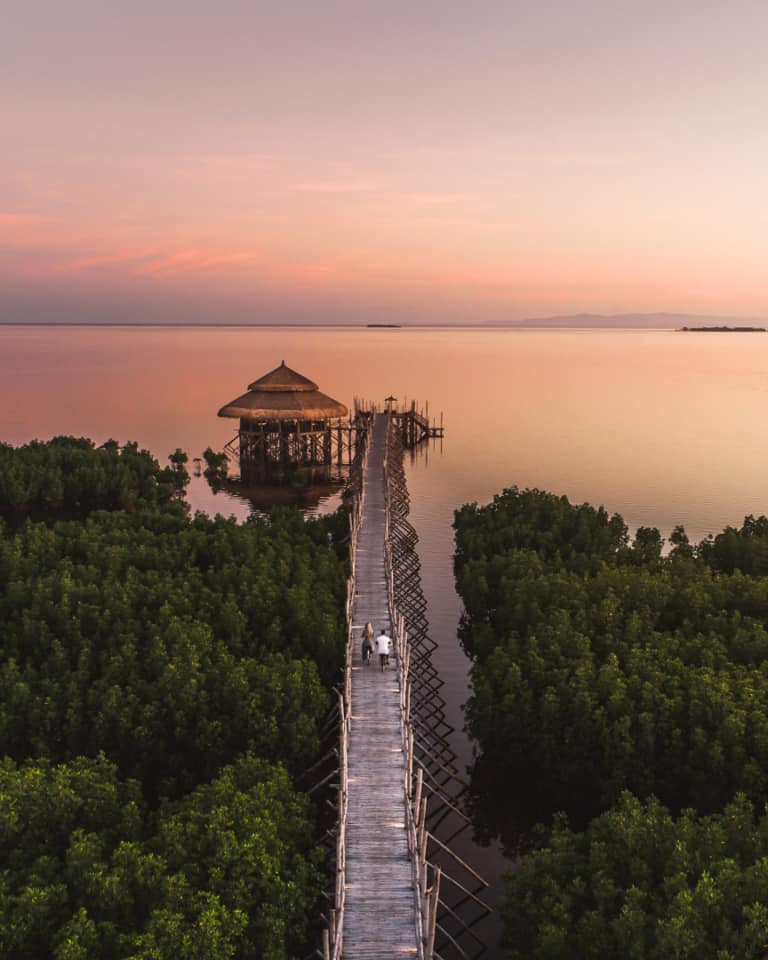
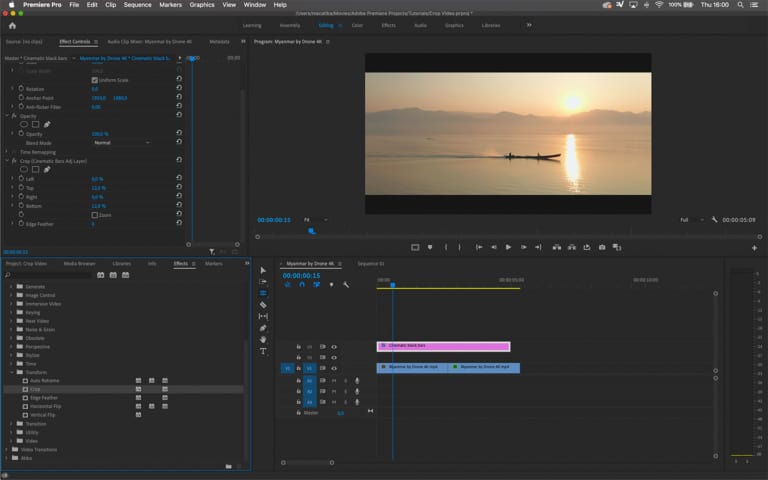
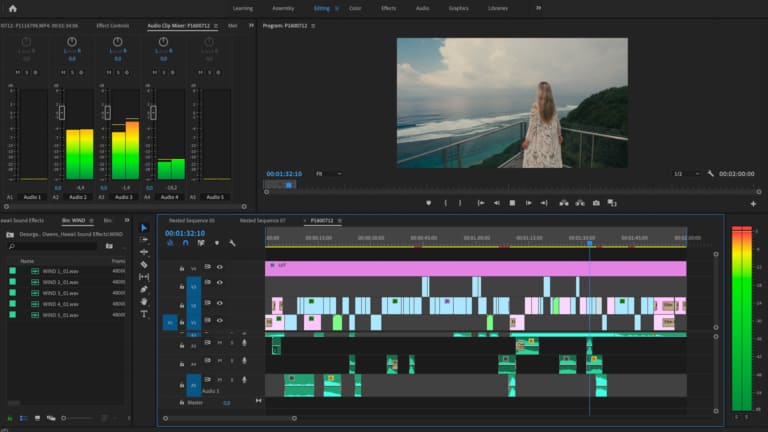
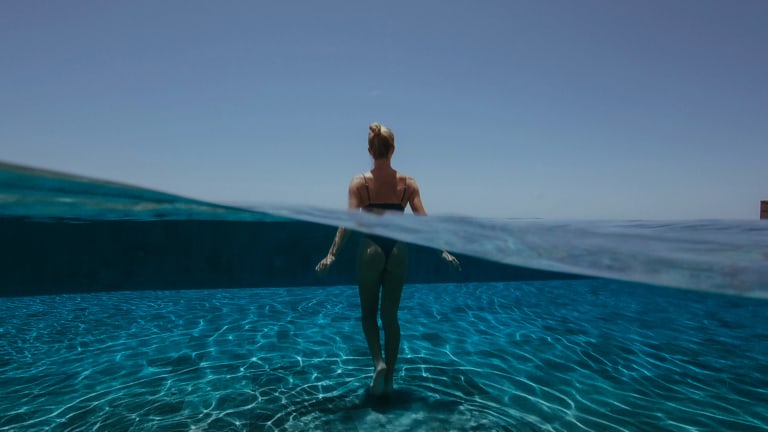

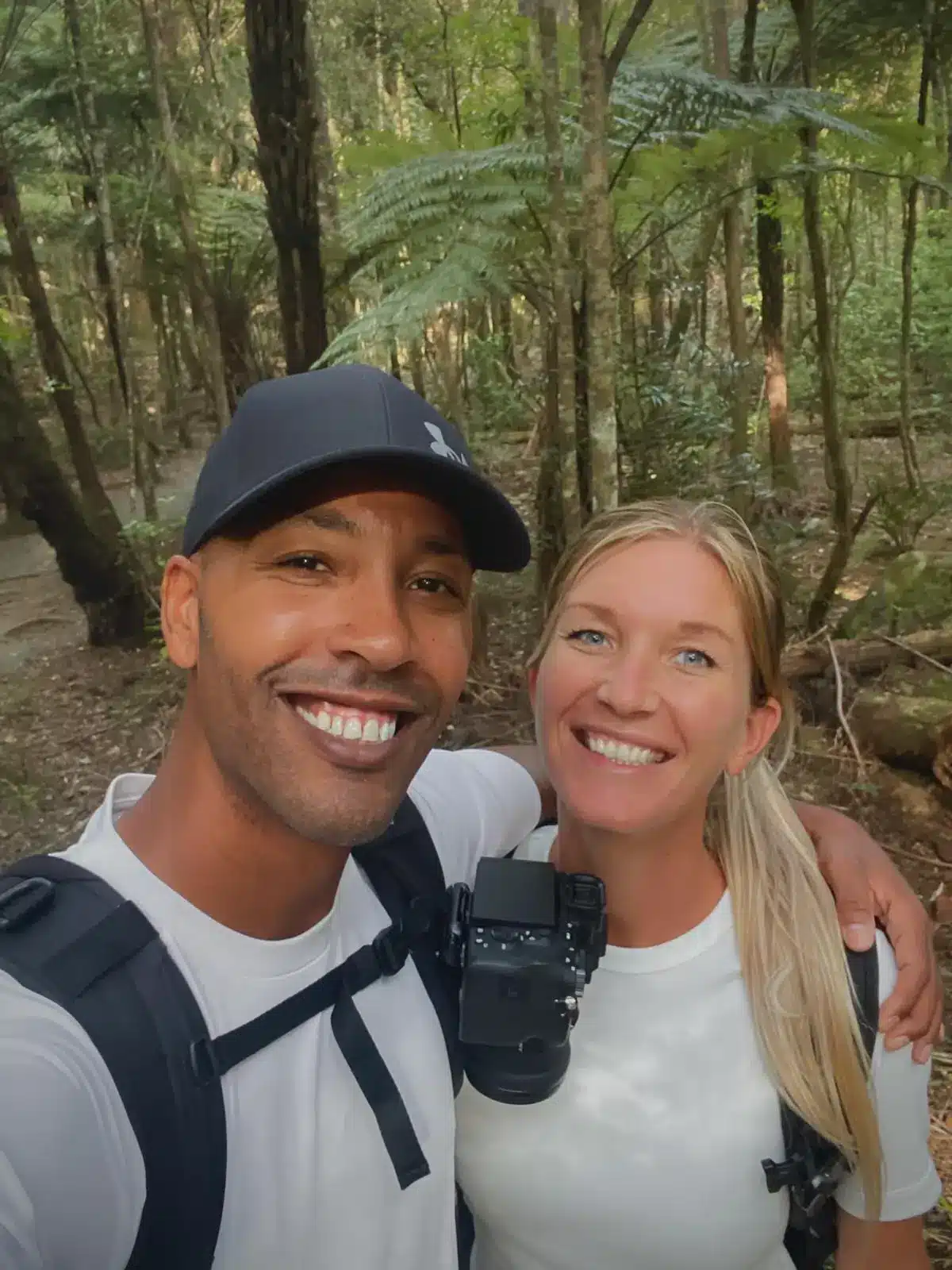
That’s awesome, congrats with your new drone. Happy flying!